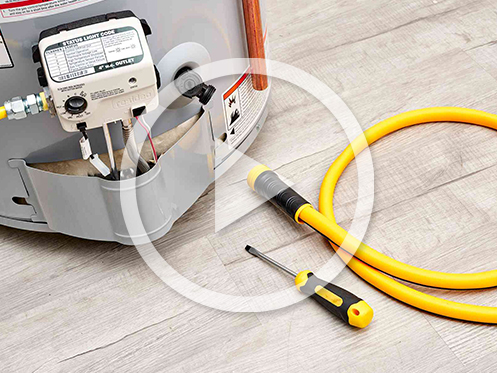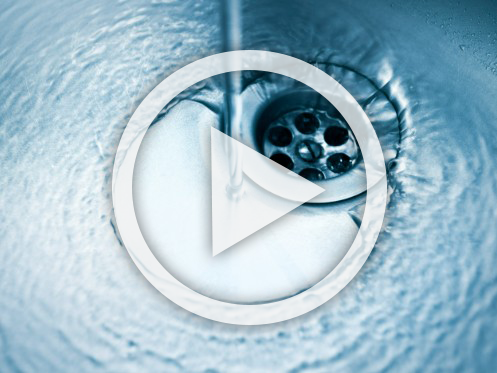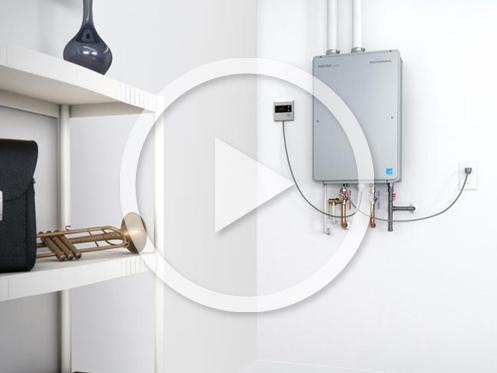Updated January 22, 2024
Ah, the toilet. It’s one of those things that can be taken for granted until it’s not working correctly. This bathroom fixture plays a central role in a home’s plumbing system, and it pays to know more about it. Below, we answer 17 frequently asked questions about toilet plumbing that homeowners should know.
1. What Types of Toilets Are Available?
The two main categories are gravity-flush toilets (water pressure to flush waste) and pressure-assisted toilets (pressurized air to flush). Gravity-flush toilets are the most common type and can be divided into two-piece (with a separate tank and bowl) or one-piece models. Pressure-assisted toilets are more powerful but also noisier than gravity-flush toilets.
2. What Are the Different Parts of a Toilet?
Most toilets contain the same essential parts: a bowl, tank, flapper or flush valve, fill valve or ballcock, and handle. The most important part is the flapper or flush valve, which controls when water flows from the tank to the bowl. The fill valve controls how much water is in the tank, while the handle triggers the flush cycle when pressed.
3. What Does a Toilet Tank Do?
The toilet tank is the water storage container located behind the bowl. It contains a fill valve that refills water to the specified level after each flush cycle. A float attached to the fill valve rises and shuts off when the tank reaches total capacity. The tank also contains the flapper or flush valve, which opens and releases water to the bowl below when the handle is pressed.
4. What Is a Toilet Wax Ring?
The toilet wax ring is a circular seal made of pliable, softened wax that fits between the toilet’s base and the flange. This ring keeps the connection between the pipes watertight and prevents leakage into your home’s flooring.
5. Where Do the Contents of a Toilet Go After Flushing?
The contents of a toilet travel through pipes to the sewer line or septic tank. Depending on your plumbing system, the waste may be treated and recycled as fertilizer or sent to a wastewater treatment plant before being discharged into a nearby body of water.
6. How Do You Maintain a Toilet?
Maintaining a toilet is relatively simple and requires minimal effort. Check for leaks regularly, clean debris from around the seat and rim, and use a disinfectant to eliminate bacteria. Replace the tank’s refill components every few years, and make sure the floor around the toilet is dry and free of mold or mildew.
7. What Causes a Toilet to Clog?
Non-flushable items like paper towels, feminine products, and excessive toilet paper usually cause clogs. Poorly installed pipes or a faulty flapper can also cause blockages. If the clog persists after trying to use a plunger or drain snake, it’s best to call a professional plumber for assistance.
8. What Does It Mean When a Toilet Is Slow to Flush?
When a toilet is slow to flush, it usually indicates a blockage in the drainage pipe or an issue with the flapper. Check for debris or other foreign material causing the clog and clear it out. If this doesn’t work, call a plumber as soon as possible.
9. What Causes Toilet Leaks?
Toilet leaks are generally caused by worn-out seals, corroded valves or pipes, damaged flappers, loose connections, or weak flush valves. The best way to determine the cause of a leak is to have a plumbing professional inspect your toilet. Read more on toilet leaks here!
10. How Do You Know If Your Toilet Is Leaking?
An easy way to tell if your toilet is leaking is to check the floor around it for water, discoloration, or mold growth. You can also add a few drops of food coloring to your tank. If the colored water appears in the bowl, you probably leak.
11. What Causes a Toilet to Run Constantly?
If your toilet is running constantly, chances are there’s a problem with the fill valve, float ball, flapper, or flush valve. The most likely culprit is a faulty flapper that needs to be replaced, but a plumber can tell you for sure.
12. How Often Should You Replace a Toilet?
Toilets should be replaced every ten years on average. Over time, regular wear and tear can cause porcelain to become brittle and prone to cracks or leaks. If you notice significant damage or have difficulty flushing the toilet, it’s likely time to install a new model.
13. Is It Necessary to Have a Plumber Install a Toilet?
Yes, hiring a professional plumber when installing or replacing a toilet is always best. Plumbers have the experience and expertise to ensure that the installation is done correctly and that all connections are secure. Learn more about us here!
14. What Is the Significance of Water Use Ratings for Toilets?
Water use ratings measure the amount of water used per flush. The lower the rating, the more efficient the toilet is likely to be regarding water consumption. Toilets account for approximately one-third of all water used in a home, so it pays to invest in a low-flow model.
15. How Much Water Does a Toilet Use Per Flush?
Most toilets made before 1994 use between 3.5 and seven gallons of water per flush. Newer, low-flow models typically use 1.6 gallons or less, saving your household thousands of gallons of water each year compared to older models.
16. What Type of Toilet Paper Is Best for Plumbing?
The best toilet paper for plumbing is designed to be flushable and quickly disintegrate in water. Be sure to use enough toilet paper that can dissolve rapidly, and never flush anything other than human waste and toilet paper down the drain. Choosing septic-safe toilet paper can also help prevent clogs or backups in your system.
17. What Are the Benefits of Installing a Dual Flush Toilet?
Dual flush toilets are designed with two different flushing options—one for liquid waste and one for solid waste—helping to reduce water consumption while effectively eliminating material. This type of toilet also helps save energy by reducing the amount of water needed to fill the tank and can help reduce utility bills over time.
The toilet is a cornerstone of modern plumbing and bathroom design, and you play a crucial role in its maintenance. If you have additional questions about your home’s toilet plumbing, Golden Rule is always here to help. Our experienced technicians have provided exceptional plumbing, heating, cooling, and electrical services for over 20 years, so you can trust us to take care of all your toilet installation and repair needs.
Contact us today to learn how we can help you keep your toilet running smoothly for years to come.
Contact Us Today for Plumbing Service!
If you found this post helpful, check out some other budget-saving tips:



